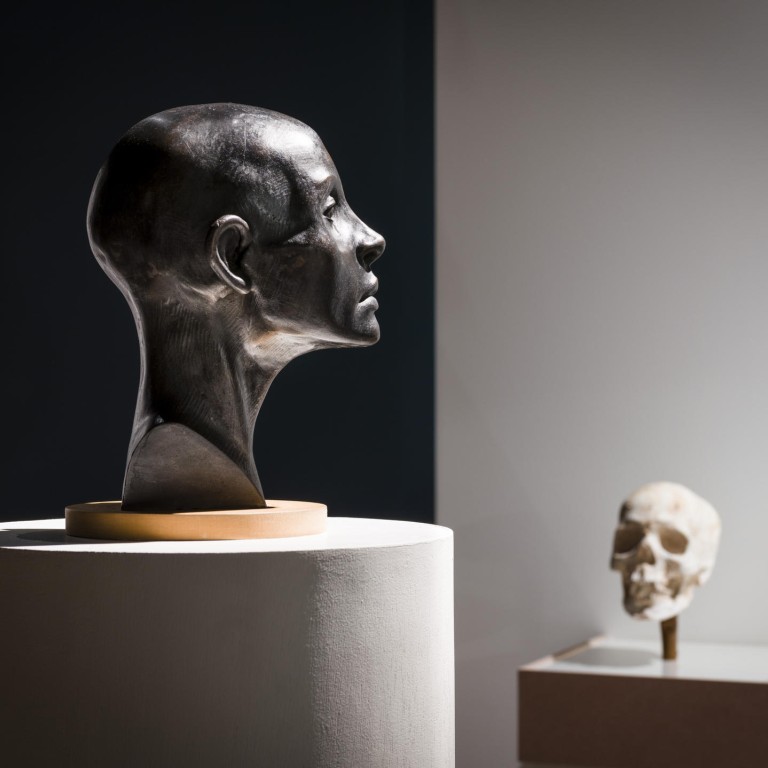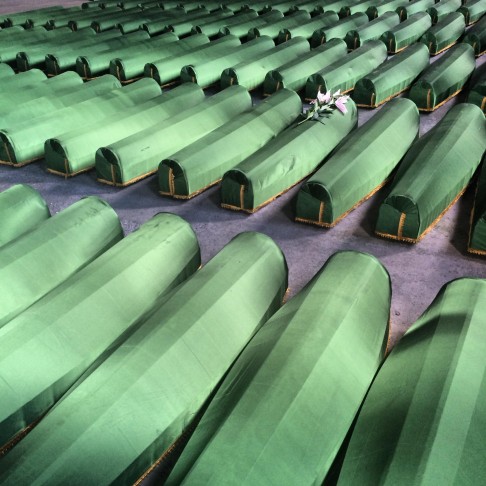
Three women artists make statements about killings
A London exhibition shows women are more intuitive in their artistic response to violent crimes
It soon became clear to Sejla Kameric how big her work, (From One, Learn All), would become. Commissioned by the Wellcome Collection in London for its new exhibition "Forensics: The Anatomy of Crime", the Bosnian artist - whose previous work tried to make sense of the war that started when she was a teenager and that killed her father - took on something huge.
She describes it as a monument, but one made of data, not stone, and just as permanent. "I found out how the information about what happened is becoming lost," she says.
"Because of the political vacuum, even the scientific facts are being erased and the one thing which is very much needed is to have the collective narrative of what actually happened. The lack of, for example, a list of missing persons 20 years after the war is horrific, or the means of how to get the information on the location of mass graves or execution sites or concentration camps."

More than 30,000 people are thought to have gone missing during the conflict, and about 9,000 are still unaccounted for. Kameric's work, a mortuary fridge with a screen that flashes up random images from her search - about 30,000 photographs, documents, records, satellite images and hours of video - provokes both a feeling of her unfolding mission and the vast scale of the crimes.
"I knew we had to collect as much as possible," says Kameric, who worked with a team of researchers and spent months visiting families, mortuaries, and sites of mass graves. "When you think about 34,000 people missing, it's just a number, but if you start counting it you understand - each single person had their own lives, families. One big wish for me is to show through this work how we are all connected, how each of us is just one knot in a huge web."
What was the hardest thing for her? "There were so many situations where I felt I was breaking. Going through the evidence of atrocities and seeing so much pain is very difficult, but somehow you find a way to accept it. What is difficult to accept is the present in which the truth is constantly hidden, and in which the survivors don't have the space to share their stories."
It wasn't deliberate, but curator Lucy Shanahan says that many of the most powerful pieces dealing with crime and its aftermath in the exhibition are by female artists, and perhaps the most moving works are all by women. "It struck me in the course of the research that I seemed to be coming across a lot of women on both sides," she says.

Why does she think that is? Shanahan remembers reading an article about British forensic botanist Patricia Wiltshire: "She suggests women have a higher tolerance for gore. Maybe it's oddly to do with the fact that we are thought to be more empathetic. She certainly observed that women tended to cope better in these situations. Whether that's true, I don't know. But I think there must be a certain element of empathy."
The curator had thought there would be a coldness, a detachment to the artists' work, but found the opposite. "All of them have a very close relationship with the subject matter. It's not a voyeuristic interpretation, and for me it was about getting to the real lives and real human stories, and making sure we didn't lose sight of that."
I work with murder to have a public discussion about the murdered body
There are three pieces by Mexican artist Teresa Margolles. One consists of 313 front pages of a newspaper, collected during 2010, showing graphic photographs of the people murdered in Mexico's drugs war, underlining its everyday occurrence. Another is a sound recording of a double autopsy of two murder victims. With no visuals to distract you, every sawing sound and fleshy squelch is magnified, contrasting with the mundane noise of a car passing outside, a reminder of life going on in the streets beyond.
In 2006, 18 months after the murder of her friend, Mexican artist Luis Miguel Suro, Margolles lifted a section of the tiled floor taken from the studio where he was shot and killed. In this setting it is, notes Shanahan, a literal transplanting of the crime scene.
"I am from Sinaloa, a very violent part of Mexico," says Margolles through a translator. Violence and crime have been "part of my life". She trained in forensics and worked in a morgue for years. "I started to realise the kind of cases that were coming in, and how violence was increasing. I realised the morgue was some kind of social thermometer," she says. "The dead body … is telling you what is going on. I work with murder to have a public discussion about the murdered body."

Margolles wanted to mark the death of her friend because many of her contemporaries had questioned why so much of her work was informed by crime and violence.
Next to Kameric's mortuary fridge are two skulls and two bronze heads showing what these people would have looked like, made by artist Christine Borland with the help of a forensic anthropologist and facial reconstruction expert. There is great beauty and dignity in them - two individuals who have been given some form of identity back, in contrast to Kameric's missing persons whose body parts are still scattered in unidentified graves.
In the early 1990s, Borland came across an osteological catalogue that offered human bones for sale to medical students and researchers. She was, she says, "blown away that you could put a price on a human spine or a human anything".
Later, when the company was winding down its offering of natural bones - plastics were becoming popular, and the Human Tissue Act would make it illegal to trade in human remains - Borland asked them to tell her when they were down to their last male and female skulls, and she would buy them.

The company said these would probably be "second-class"(that the better specimens would be more sought-after and would go). "They were talking about it in a strictly classification way - if teeth were missing, or there was what they would consider to be abnormalities - but to me that had different connotations," Borland says. "That added another layer of pathos, which made me even more keen to dignify these last two commercial skulls."
They arrived in the post, in an innocuous cardboard box, "just commodities, being delivered like any other parcel". Although little is known about them, she was able to recreate their faces, using modern techniques used in forensic science.
What is it about forensics that interests her? "It's the crossover between the rigorous scientific methods and the magic of the trace being able to lead you to construct a picture, or a scene," Borland says.
"I like the idea of something very small, whether it be dust or a mark, something seemingly unspectacular in many situations, and then being able to build a narrative from that. It's a scientific discipline, but it also speaks of imagination and art."
